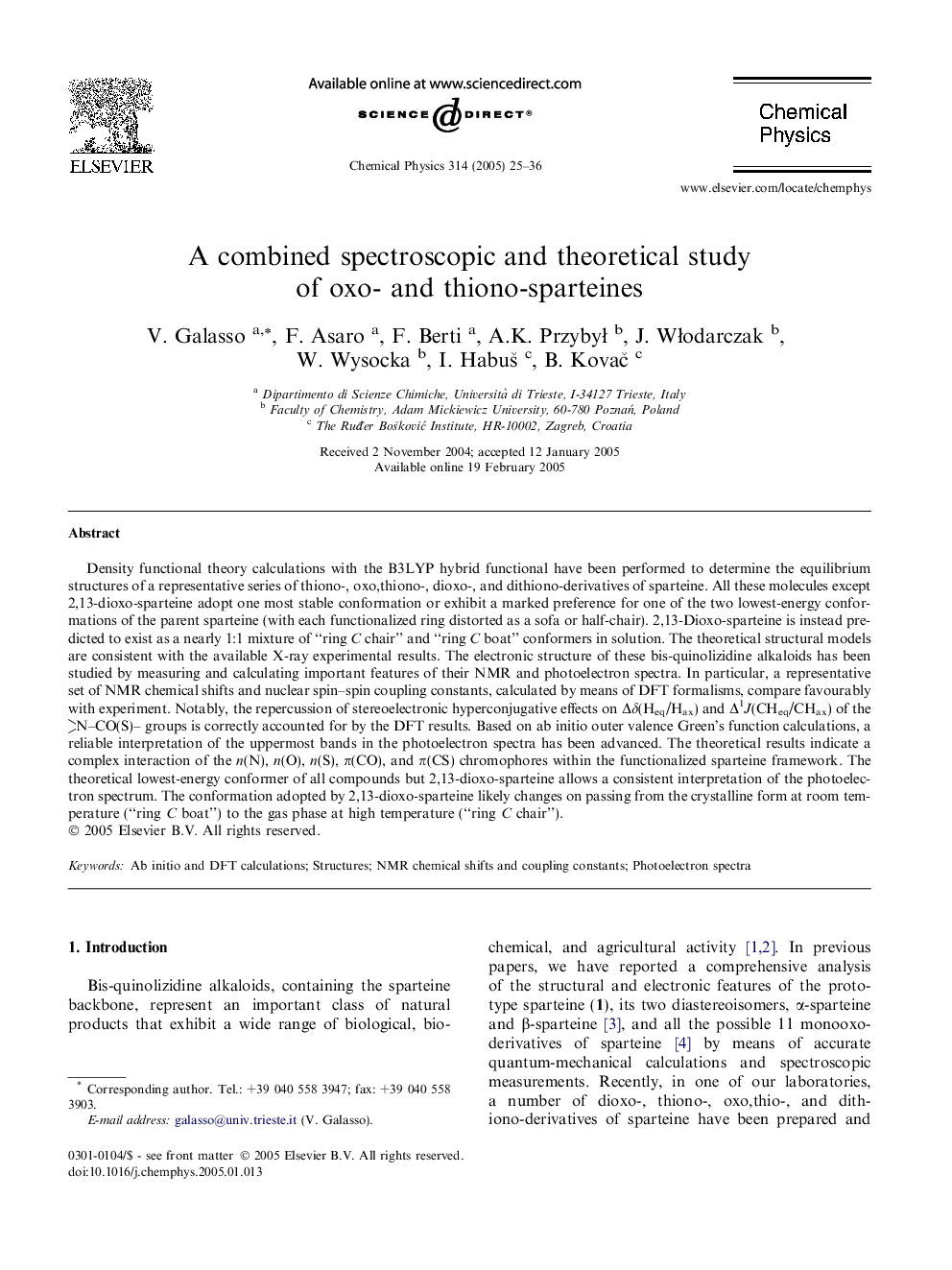| Article ID | Journal | Published Year | Pages | File Type |
|---|---|---|---|---|
| 9575295 | Chemical Physics | 2005 | 12 Pages |
Abstract
Density functional theory calculations with the B3LYP hybrid functional have been performed to determine the equilibrium structures of a representative series of thiono-, oxo,thiono-, dioxo-, and dithiono-derivatives of sparteine. All these molecules except 2,13-dioxo-sparteine adopt one most stable conformation or exhibit a marked preference for one of the two lowest-energy conformations of the parent sparteine (with each functionalized ring distorted as a sofa or half-chair). 2,13-Dioxo-sparteine is instead predicted to exist as a nearly 1:1 mixture of “ring C chair” and “ring C boat” conformers in solution. The theoretical structural models are consistent with the available X-ray experimental results. The electronic structure of these bis-quinolizidine alkaloids has been studied by measuring and calculating important features of their NMR and photoelectron spectra. In particular, a representative set of NMR chemical shifts and nuclear spin-spin coupling constants, calculated by means of DFT formalisms, compare favourably with experiment. Notably, the repercussion of stereoelectronic hyperconjugative effects on Îδ(Heq/Hax) and Î1J(CHeq/CHax) of the N-CO(S)- groups is correctly accounted for by the DFT results. Based on ab initio outer valence Green's function calculations, a reliable interpretation of the uppermost bands in the photoelectron spectra has been advanced. The theoretical results indicate a complex interaction of the n(N), n(O), n(S), Ï(CO), and Ï(CS) chromophores within the functionalized sparteine framework. The theoretical lowest-energy conformer of all compounds but 2,13-dioxo-sparteine allows a consistent interpretation of the photoelectron spectrum. The conformation adopted by 2,13-dioxo-sparteine likely changes on passing from the crystalline form at room temperature (“ring C boat”) to the gas phase at high temperature (“ring C chair”).
Keywords
Related Topics
Physical Sciences and Engineering
Chemistry
Physical and Theoretical Chemistry
Authors
V. Galasso, F. Asaro, F. Berti, A.K. PrzybyÅ, J. WÅodarczak, W. Wysocka, I. HabuÅ¡, B. KovaÄ,
